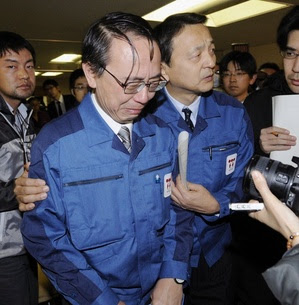Germany's coalition government decided early Monday to shut down all of the country's nuclear power plants by 2022, a policy change prompted by Japan's nuclear disaster, the environment minister said.
Meanwhile, the country's seven oldest reactors, which were taken off the grid pending safety inspections following the catastrophe at Japan's Fukushima nuclear power plant in March, will remain offline permanently, Norbert Roettgen said. The country has 17 reactors total. Roettgen praised the coalition agreement after negotiations through the night between the governing parties.
"This is coherent," he said in Berlin. "It is clear. That's why it is a good result."
Chancellor Angela Merkel in 2010 had pushed through measures to extend the lifespan of the country's 17 reactors with the last one scheduled to go offline in 2036, but she reversed her policy in the wake of the disaster.
Germany, Europe's biggest economy, stands alone among the world's major industrialized nations in its determination to gradually replace nuclear power with renewable energy sources.
Through March — before the seven reactors were taken offline — just under a quarter of Germany's electricity was produced by nuclear power, about the same share as in the U.S. Energy from wind, solar and hydroelectric power currently produces about 17 per cent of the country's electricity, but the government aims to boost its share to around 50 per cent in the coming decades.
Many Germans have been vehemently opposed to nuclear power since the 1986 Chernobyl disaster sent radioactive fallout over the country. Tens of thousands repeatedly took to the street in the wake of Fukushima to urge the government to shut all reactors.
Japanese crisis prompted reversal
A centre-left government a decade ago first penned a plan to abandon the technology for good because of its inherent risks by 2021. But Merkel's government last year amended it to extend the plants' lifetime by an average of 12 years.But the conservative chancellor reversed her pro-nuclear stance after the earthquake and tsunami that crippled the Fukushima Daiichi plant on March 11, triggering nuclear meltdowns.
Merkel's government ordered the country's seven oldest reactors, built before 1980, shut down four days after the Fukushima incident. The plants, which will now remain offline, accounted for about 40 per cent of the country's nuclear power capacity.
Germany used to be a net energy exporter, and the agency overseeing its electricity grid said Friday that the country remains self-sufficient even without the seven reactors and another plant that has already been offline for more than a year for maintenance work.
The coalition government's decision broadly follows the conclusions of a government-mandated commission on the ethics of nuclear power, which delivered its recommendation to abolish the technology by 2022 on Saturday. Details of the final report are to be presented later Monday.
Shutting down even more reactors, however, will require billions of investment in renewable energies, more natural gas power plants and an overhaul of the country's electricity grid.
The government of neighbouring Switzerland, where nuclear power produces 40 per cent of the country's electricity, also announced last week that it plans to shut down its reactors gradually once they reach their average lifespan of 50 years — which would mean taking the last plant off the grid in 2034.
Source: CBCnews




































